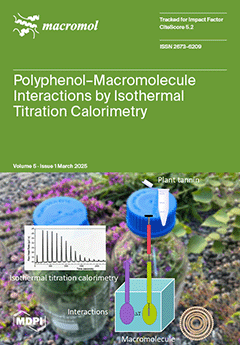Open AccessArticle
Techno-Functionalities of White Bean Protein Concentrate: A Comparative Study with Soy and Pea Proteins
by
Paula Zambe Azevedo, Juliana Eloy Granato Costa, Jessica da Silva Matos, Breno Rodrigues de Souza, Sueli Rodrigues, Fabiano André Narciso Fernandes, Vanelle Maria Silva, Márcia Cristina Teixeira Ribeiro Vidigal, Paulo Cesar Stringheta, Evandro Martins and Pedro Henrique Campelo
Cited by 1 | Viewed by 2711
Abstract
The study of the techno-functional properties of novel plant-based proteins has gained importance due to their as alternatives to conventional proteins in food systems. This work evaluated the techno-functional and structural properties of white bean protein concentrate (WBPC) in comparison with commercial soy
[...] Read more.
The study of the techno-functional properties of novel plant-based proteins has gained importance due to their as alternatives to conventional proteins in food systems. This work evaluated the techno-functional and structural properties of white bean protein concentrate (WBPC) in comparison with commercial soy and pea proteins. The WBPC exhibited a higher foaming capacity (FC) at neutral pH and excellent foam stability (FS) at both tested pH levels, outperforming the commercial proteins. Although the WBPC’s gelation occurred only at concentrations above 16% and its water-holding capacity (WHC) was lower than that of the soy and pea proteins, the WBPC showed a high binding capacity for nonpolar molecules, excelling in its oil-holding capacity (OHC) and forming stable emulsions, which are relevant for stabilization in food products. Additionally, WBPC can form more rigid gel networks, suitable for systems requiring greater mechanical strength. These techno-functional properties indicate that WBPC is a promising alternative source for the plant-based food industry, helping to meet the demand for innovative, sustainable products and contributing to the diversification of protein sources.
Full article
►▼
Show Figures





